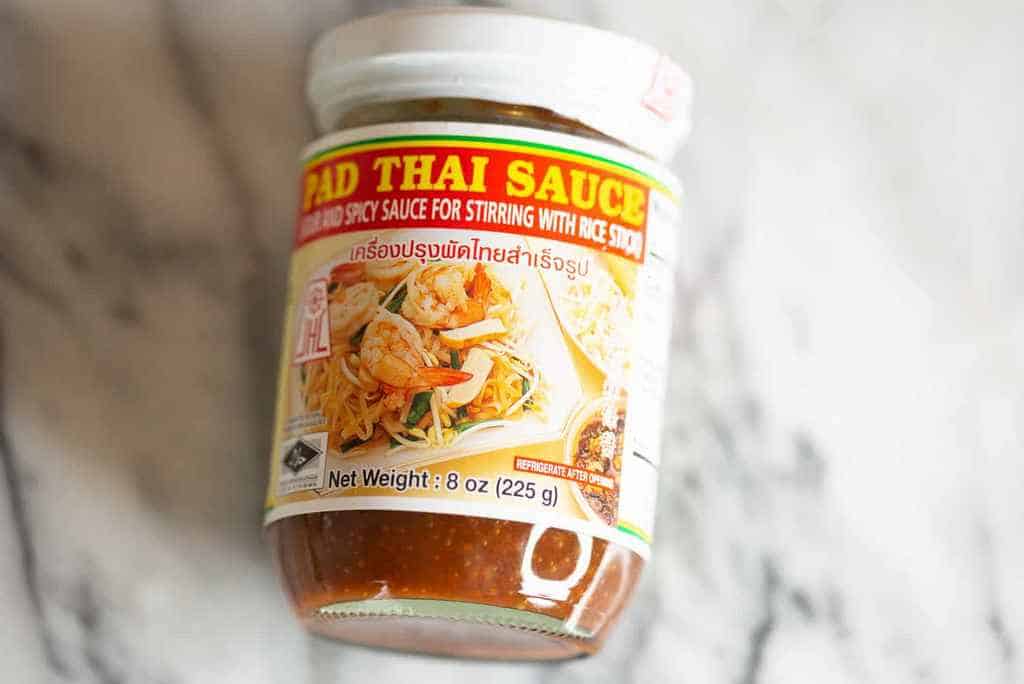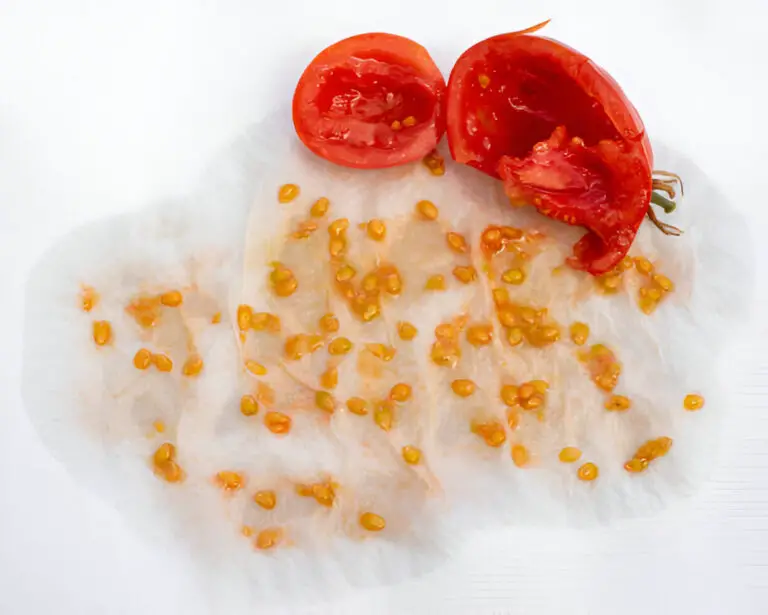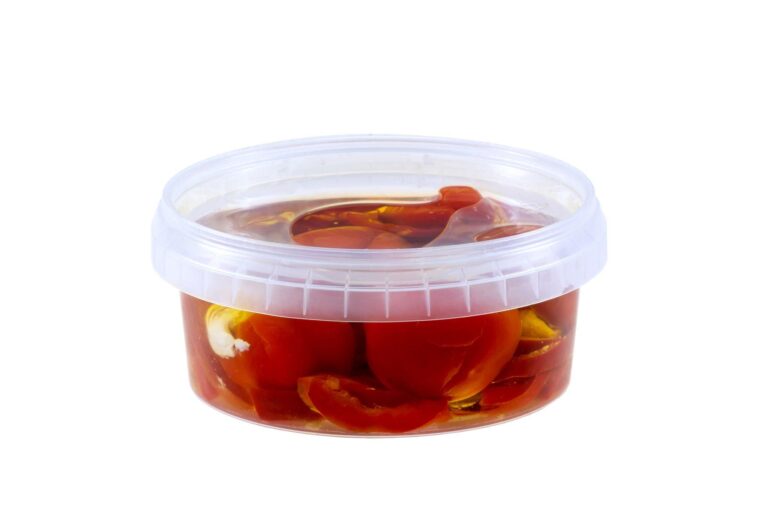Fish Sauce Substitute for Pad Thai: Alternative Flavorful Condiment

If you are a fan of the mouthwatering flavors of Thai cuisine, then you’re probably familiar with one of its essential ingredients: fish sauce. Fish sauce is a staple condiment in many Thai dishes, including the popular Pad Thai.
However, for those who follow a vegetarian or vegan diet or simply prefer to avoid fish sauce, finding a suitable substitute can be a game-changer.
Bid farewell to fish sauce and say hello to a range of delectable substitutes. This replacement sauce will tantalize your taste buds without compromising the authentic Thai experience. From soy sauce and tamari to coconut aminos and miso paste, we’ll explore the unique qualities and flavors of each option.
Prepare to embark on a culinary adventure. We will unlock the secrets to creating a flavorful and satisfying Pad Thai with these delicious alternatives. Get ready to take your taste buds on a flavorful journey where tradition meets innovation in every mouthful!
Introduction to Fish Sauce and its Significance in Pad Thai
Fish sauce, with its origins rooted in the culinary traditions of Southeast Asia, holds a remarkable place as a fermented condiment made from: fish, salt, and water.
This remarkable concoction has graced the kitchens of Thai cooks for countless generations. The importance of fish sauce cannot be overstated, especially in the context of Pad Thai. Fish sauce gives the dish unmatched depth and complexity.
Beyond its ability to enhance flavors, fish sauce possesses a unique quality known as umami. It is a savory taste sensation that adds depth and complexity to dishes. This elusive quality, prized in Thai cuisine, contributes to the distinctiveness of Pad Thai. It makes it an exceptional culinary experience. Each bite becomes a journey of flavors, with fish sauce leading the way, leaving a lasting impression on the palate.
Challenges with Fish Sauce in Pad Thai
While fish sauce is widely used and loved, it may pose certain challenges in specific situations. These challenges include:
- Allergies and Dietary Restrictions: Fish sauce contains fish and may not be suitable for individuals with seafood allergies or those following vegetarian or vegan diets.
- Availability and Cost: Depending on your location, fish sauce may not be readily available or can be expensive compared to other condiments.
- Unpleasant Odor or Taste: Some people find the strong aroma or taste of fish sauce off-putting, which can affect their enjoyment of Pad Thai.
Alternatives to Fish Sauce

- Soy Sauce: One of the most common substitutes for fish sauce is soy sauce. It provides a salty and savory flavor that can mimic the umami taste of fish sauce. Opt for a high-quality soy sauce to ensure the best flavor. Tamari, a type of soy sauce made without wheat, is a great gluten-free option.
- Tamari: As mentioned earlier, tamari is a gluten-free soy sauce alternative that can be used as a fish sauce substitute. It has a milder taste than traditional soy sauce, making it a good option for those who prefer a less intense flavor.
- Coconut Aminos: Coconut aminos is a condiment made from the sap of coconut blossoms. It has a sweet and savory taste that can work well in Thai dishes. Coconut aminos are gluten-free and soy-free, making them an excellent choice for those with dietary restrictions.
- Miso Paste: Miso paste is a fermented soybean paste that is used in Japanese cuisine. It has a complex, salty, and sweet flavor that can provide depth to your dishes. Look for lighter miso varieties, such as white or yellow miso, as they are milder in taste.
- Vegetarian Oyster Sauce: While oyster sauce contains oysters, there are vegetarian versions that use mushrooms or other plant-based ingredients. Vegetarian oyster sauce can offer a similar umami flavor to fish sauce and works well in Thai dishes like Pad Thai.
- Golden Mountain Sauce: Golden Mountain Sauce, also known as “Seasoning Sauce,” is a popular condiment in Thai cooking. It has a savory and slightly sweet taste and can be used as a substitute for fish sauce. It adds depth and richness to your dishes, making it a great option for Pad Thai.
- Tamarind Paste: Tamarind paste is made from the pulp of the tamarind fruit and has a tangy and slightly sweet flavor. It is commonly used in Thai cuisine to add a sour note to dishes. While it doesn’t replicate the exact taste of fish sauce, combining tamarind paste with other condiments can help achieve a well-balanced flavor.
How to Use the Substitutes in Pad Thai
Now that we’ve explored some fish sauce substitutes, let’s discuss how to incorporate them into your Pad Thai recipe. Here’s a simple guide to using the alternatives mentioned above:
- Soy Sauce or Tamari: Use soy sauce or tamari as a 1:1 replacement for fish sauce in your Pad Thai recipe. Start by adding a small amount and taste as you go, adjusting the quantity to your preference. Remember that some brands of soy sauce are saltier than fish sauce, so you may need to reduce the amount of salt in your recipe.
- Coconut Aminos: Coconut aminos can be used in the same way as soy sauce or tamari. It provides a slightly sweeter flavor than fish sauce, so you may need to balance it with a bit of acidity of fish sauce. You can do it by adding lime juice or rice vinegar, to achieve the desired taste.
- Miso Paste: Add miso paste by diluting it with a bit of water or vegetable broth to create a sauce-like consistency. Add it to your Pad Thai towards the end of cooking to preserve its flavor. Start with a small amount and adjust according to your taste preferences.
- Vegetarian Oyster Sauce: If using vegetarian oyster sauce, simply substitute it in equal amounts for fish sauce. It will contribute a similar umami taste to your Pad Thai.
- Golden Mountain Sauce: Use Golden Mountain Sauce as a 1:1 replacement for fish sauce in your recipe. Its savory and slightly sweet flavor will enhance the taste of your Pad Thai.
- Tamarind Paste: To incorporate tamarind paste, dissolve it in warm water and strain to remove any seeds or fibers. Use the resulting tamarind water in place of fish sauce, adjusting the quantity to achieve the desired level of tanginess. Remember to balance the sourness with other flavors in your recipe.
Experiment with these alternatives and adjust the quantities according to your personal tastes and preferences. Remember, cooking is all about exploring and finding the combinations that work best for you.
Homemade Fish Sauce Alternatives
For those who enjoy experimenting in the kitchen, creating homemade fish sauce substitutes can be a rewarding endeavor. Here are a couple of recipes you can try:
Recipe 1: Vegan Fish Sauce Substitute
Ingredients:
- 1 cup of vegetable broth
- 2 tablespoons of soy sauce or tamari
- 1 teaspoon of miso paste
- 1 tablespoon of rice vinegar
- 1/2 teaspoon of kelp powder (optional, for additional umami flavor)
Instructions:
- In a small saucepan, combine all the ingredients.
- Bring the mixture to a simmer over medium heat, stirring occasionally.
- Allow it to simmer for 5-10 minutes, until the flavors have melded together.
- Remove it from the heat and let it cool before using it as a fish sauce substitute in your Pad Thai recipe.
Recipe 2: Mushroom-Based Fish Sauce Substitute
Ingredients:
- 1 cup of dried shiitake mushrooms
- 4 cups of water
- 1/4 cup of soy sauce or tamari
- 1 tablespoon of cane sugar or maple syrup
- 1 tablespoon of rice vinegar
Instructions:
- In a large pot, bring the dried shiitake mushrooms and water to a boil.
- Reduce the heat to low and simmer for 30-40 minutes, allowing the mushrooms to infuse the liquid.
- Strain the mushroom broth into a clean container, discarding the mushrooms.
- Add soy sauce or tamari, sugar or maple syrup, and rice vinegar to the mushroom broth, stirring well to combine.
- Let the mixture cool before using it as a fish sauce substitute in your Pad Thai recipe.
Feel free to adjust the ingredients and quantities to suit your taste preferences.
Conclusion
For vegetarians, vegans, and non-fish eaters, finding a fish sauce substitute opens up new possibilities. Pad Thai and other Thai dishes can still taste authentic with soy sauce, tamari, coconut aminos, miso paste, vegetarian oyster sauce, Golden Mountain Sauce, and tamarind paste.
Remember to start with small amounts and adjust to your taste as you go along. Each substitute has its own unique flavor profile, so don’t be afraid to experiment and find the perfect combination that satisfies your cravings.
Happy cooking, and enjoy your flavorful Pad Thai!
FAQs on fish sauce substitute for Pad Thai
Will using a substitute significantly change the taste of Pad Thai?
Using a substitute in Pad Thai can alter the taste to some extent. While it may still result in a delicious dish, the distinct umami and depth of flavor that fish sauce brings might be missing. It’s worth experimenting with different substitutes to find one that suits your tastes.
Where can I find vegetarian or vegan fish sauce alternatives for Pad Thai?
Vegetarian and vegan fish sauce alternatives can be found in specialty stores or online. Look for options like soy-based sauces, mushroom-based sauces, or seaweed-based sauces. These alternatives can provide a similar savory element to your Pad Thai while catering to dietary preferences.
How does soy sauce compare to fish sauce in terms of flavor?
Soy sauce and fish sauce have distinct flavor profiles. While both are savory condiments, soy sauce tends to be saltier and lacks the unique fishy undertones of fish sauce. Using soy sauce as a substitute can add saltiness and some depth of flavor, but it won’t perfectly replicate the taste of fish sauce in Pad Thai.
Can I use Worcestershire sauce as a substitute for fish sauce in Pad Thai?
Worcestershire sauce can be used as a substitute for fish sauce in Pad Thai, but it’s important to note that it has a distinct flavor of its own. Worcestershire sauce contains a blend of ingredients, including anchovies, vinegar, molasses, and spices. While it can add complexity and depth to the dish, the flavor profile will differ from traditional Pad Thai made with fish sauce.
What is the taste difference between oyster sauce and fish sauce in Pad Thai?
Oyster sauce and fish sauce have different taste profiles. Oyster sauce has a rich, slightly sweet flavor with a hint of umami. It doesn’t possess the pronounced fishiness of fish sauce, but it can still contribute to the overall flavor of Pad Thai. Using oyster sauce as a fish sauce replacement will result in a slightly different taste, adding a touch of sweetness and umami to the dish.
Can I combine different condiments to replace fish sauce in Pad Thai?
It is possible to combine different condiments to replace fish sauce in Pad Thai. Experimenting with a blend of soy sauce, miso paste, mushroom sauce, or vegetable broth They can recreate the umami flavors that fish sauce provides. Adjust the proportions until you get a taste you like.






